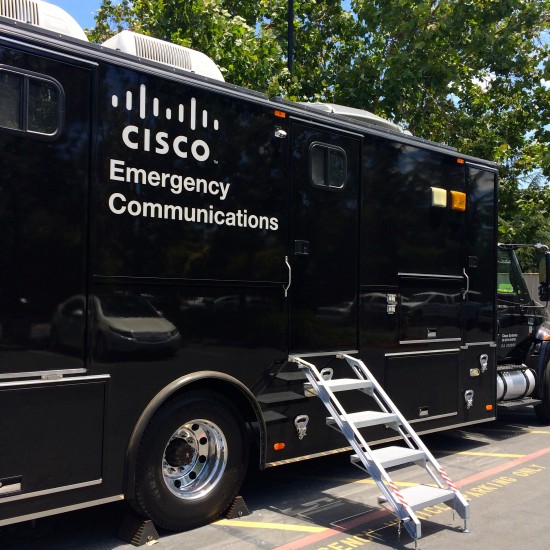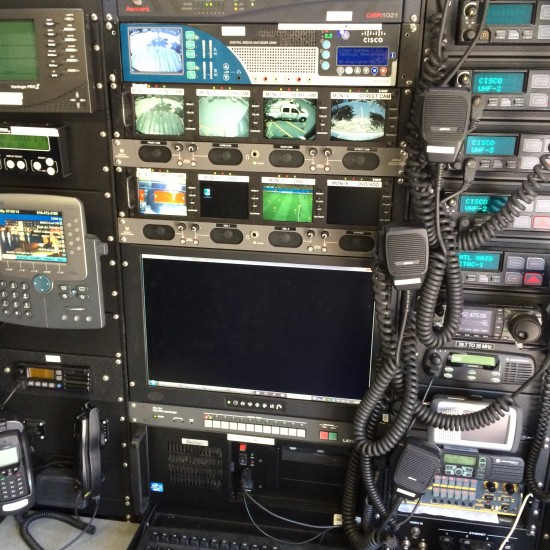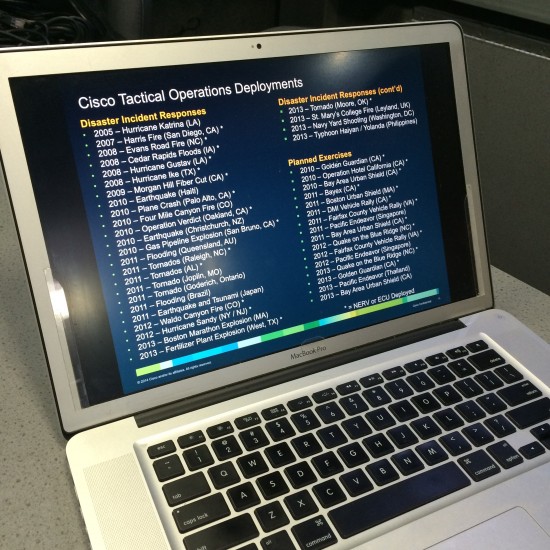































Hurricane season is upon us, and storms have already begun to harass the Gulf Coast with torrential rains and violent winds. The threat of such a storm doesn't cross my mind as I sit in my cubicle in San Jose, enjoying the comforts of an air-conditioned office and a hot cup of coffee on my desk. But behind building J on Cisco's San Jose campus, Rakesh Bharania and the Cisco Tactical Operations (TacOps) team are on 24/7 alert, ready to respond the moment an earthquake strikes or a tornado touches down anywhere in the world.
I had the privilege of visiting Rakesh and his team this week, getting a behind-the-scenes look at Cisco's investment in using networking technology to help those in need when disaster hits.
After disaster strikes, the TacOps team can deploy within 72 hours -the most critical stage of a response. When a disaster cripples communications systems, the TacOps team can establish satellite-based communications so first responders, government agencies, and relief organizations can coordinate relief efforts and speed delivery of food, water, shelter, and medical care to those affected.
Rakesh Bharania, a networking consulting engineer for TacOps in San Jose, gave me a tour of one of the team's two Network Emergency Response Vehicles (NERV), a command center on wheels that serves as the heart of any TacOps deployment in the United States.
 The NERV is fully-functional 15 minutes after arriving on scene, providing networked, IP communications for emergency responders
The NERV is fully-functional 15 minutes after arriving on scene, providing networked, IP communications for emergency responders"As we've been more successful at getting the Internet into society, we realized that the network and this technology are going to get more and more critical to disasters as time goes on," he said.
The NERV was designed and rolled out in 2006 after Hurricane Katrina struck the U.S. Gulf Coast in Mississippi and Louisiana, destroying the communications infrastructure and making communication among first responders impossible.
From the outside, the NERV is an imposing tank of a truck, equipped with flashing lights, a satellite dish and a monstrous set of tires ready to conquer any terrain. Walk up the metal steps and through the doors, however, and you'll find a full-fledged mobile networking center capable of establish interoperable communications among first responders in even the most ravaged environments.
 The front of the NERV, complete with Cisco networking equipment, satellite television and Cisco TelePresence
The front of the NERV, complete with Cisco networking equipment, satellite television and Cisco TelePresence"What makes Cisco special is that we have the ability to go into the field, into the middle of an emergency, with trained personnel and specialized equipment," Rakesh told me, as we gazed at the flashing lights and monitors packed inside the NERV.
The front of the vehicle has been transformed into a mobile office, complete with Cisco's Integrated Service Routers that provide highly secure virtual private networks for emergency responders in affected areas. All of this is made possible through the 1.8-meter satellite dish on the roof, which provides up to 5 Megabits per second of bandwidth for voice, video, and data applications critical to disaster relief.
As Rakesh and I walked to the back of the truck, I felt as though I was stepping into any conference room at Cisco's campus. This room is equipped with Cisco TelePresence, enabling decision makers onsite to manage crises and collaborate with emergency responders in other parts of the state or relief agencies like FEMA and the Red Cross.
 A computer sits on the conference table in the NERV's conference room, listing the different TacOps deployments
A computer sits on the conference table in the NERV's conference room, listing the different TacOps deployments"The goal here is once you're connected to the Internet, you can respond locally and communicate globally," Rakesh said.
The full-time TacOps team is made up of 14 members and supported by the Disaster Incident Response Team (DIRT), a global contingent of 300 volunteer Cisco employees.
"There is a group of individuals, Cisco people who want to give back using their technology skills," Rakesh said. "These people flesh out our teams and support us" in disaster relief efforts from Hurricane Sandy in the United States to Typhoon Haiyan in the Philippines.
TacOps is using Cisco technology to impact the lives of those most affected by disasters, combining human collaboration and networked connections to bring Internet connectivity to any disaster area in the world.
"It's really cool to see what that means for everyone else inside the company and I think that if you talked to everyone on the team, this is one of the coolest jobs they've ever had," Rakesh said.
Visit the Cisco TacOps Facebook page for more information on the team, DIRT volunteering, and photos from the most recent deployments!
 Etiquetas calientes:
Corporate Social Responsibility (CSR)
Cisco CSR
disaster relief
emergency response
Cisco TacOps
disaster response
Emergency Communications
Cisco NERV
Etiquetas calientes:
Corporate Social Responsibility (CSR)
Cisco CSR
disaster relief
emergency response
Cisco TacOps
disaster response
Emergency Communications
Cisco NERV